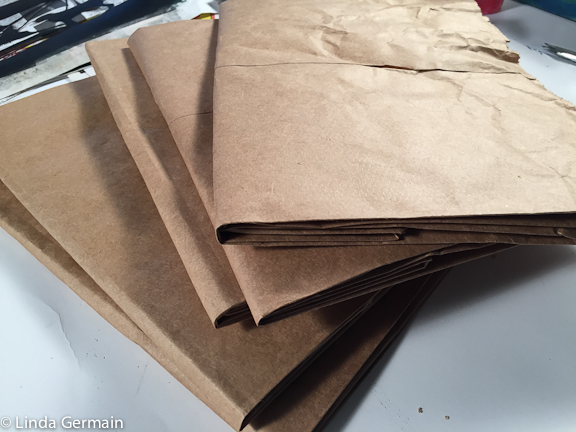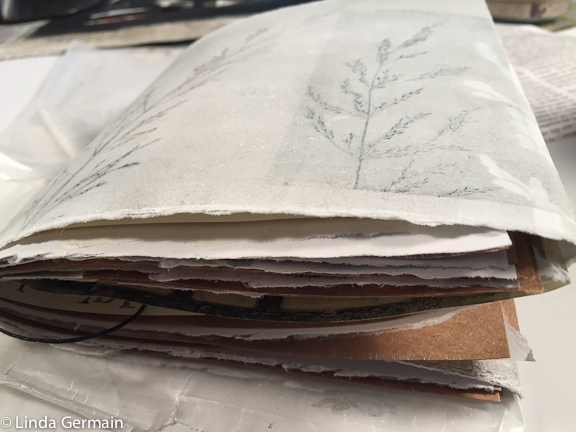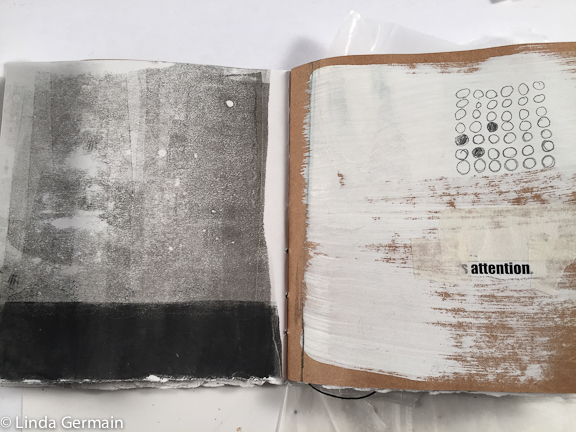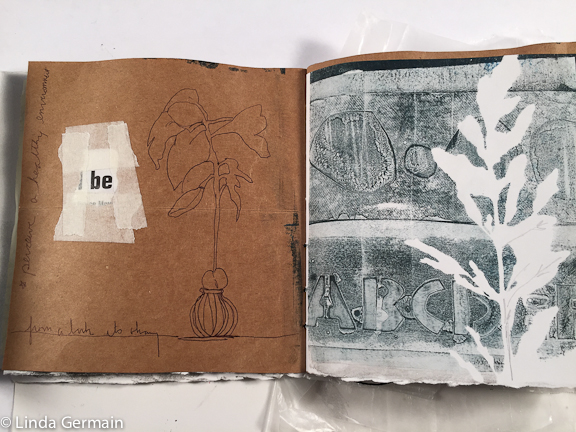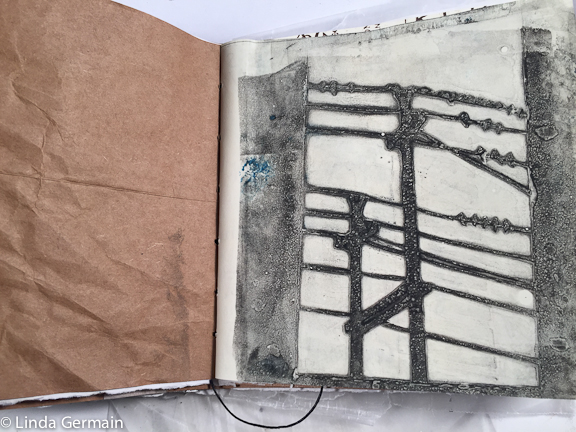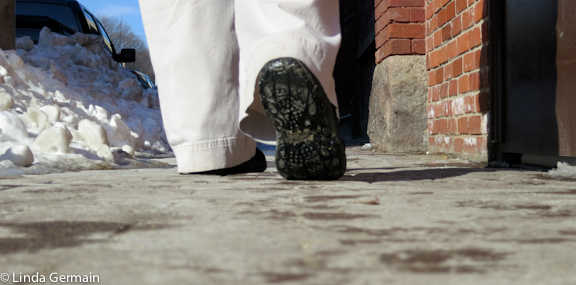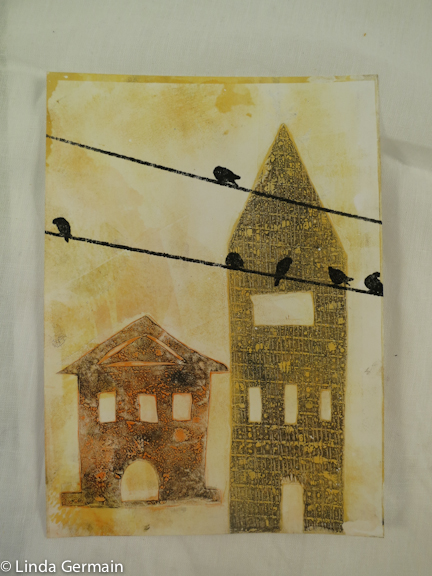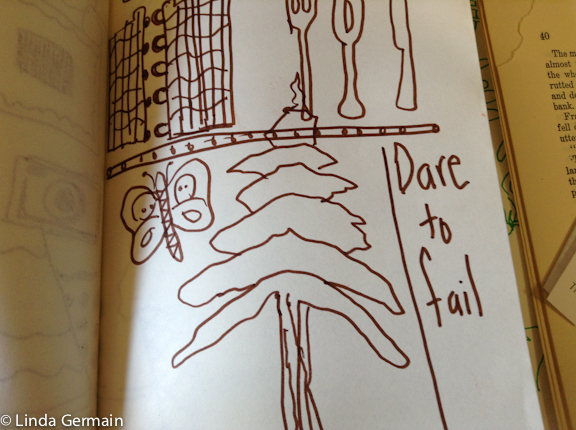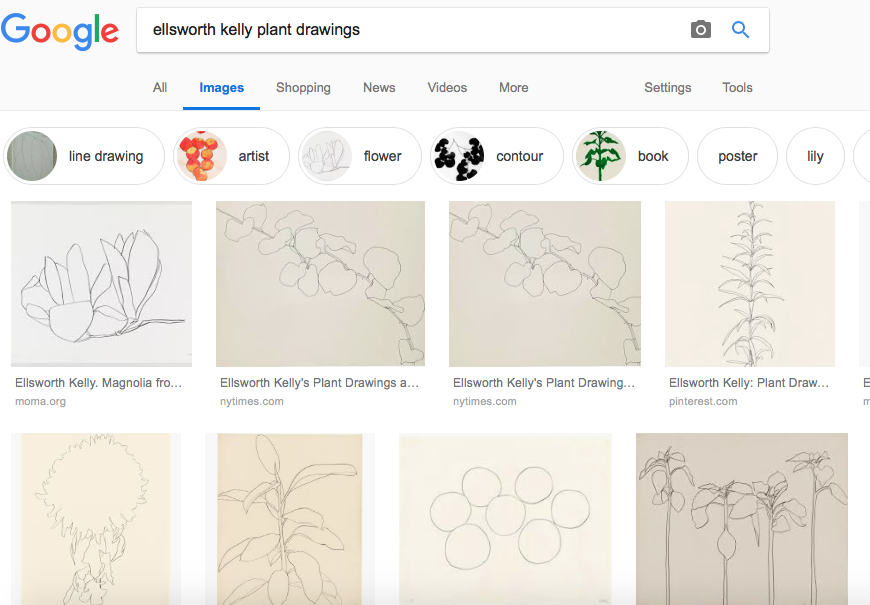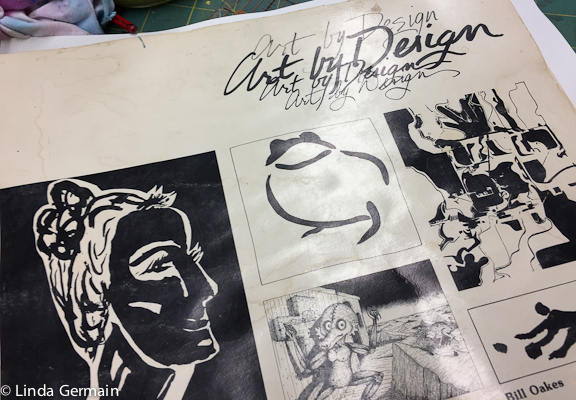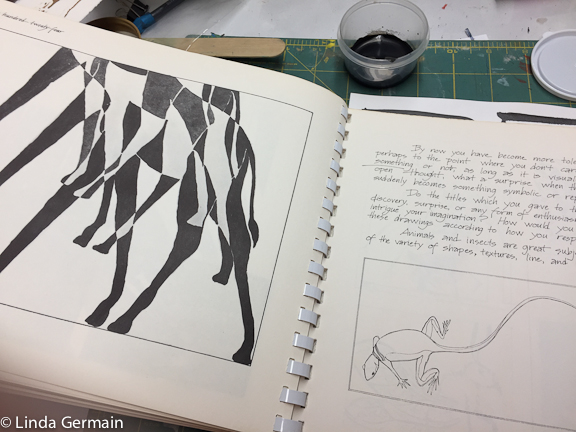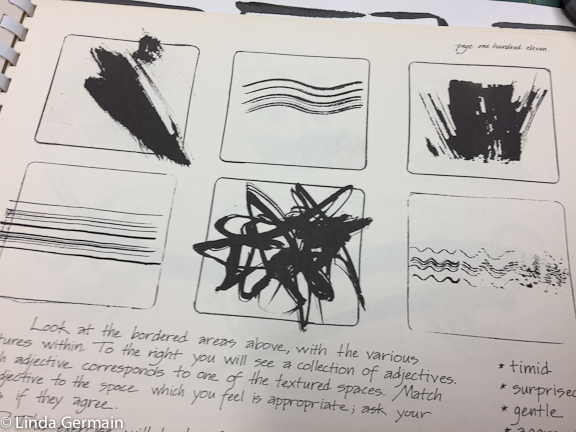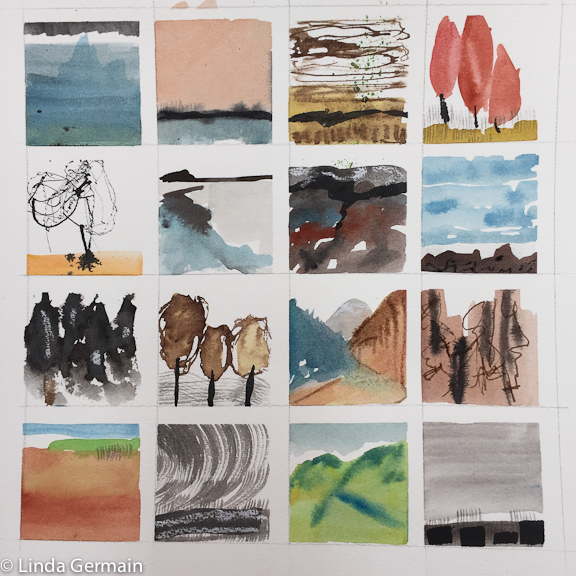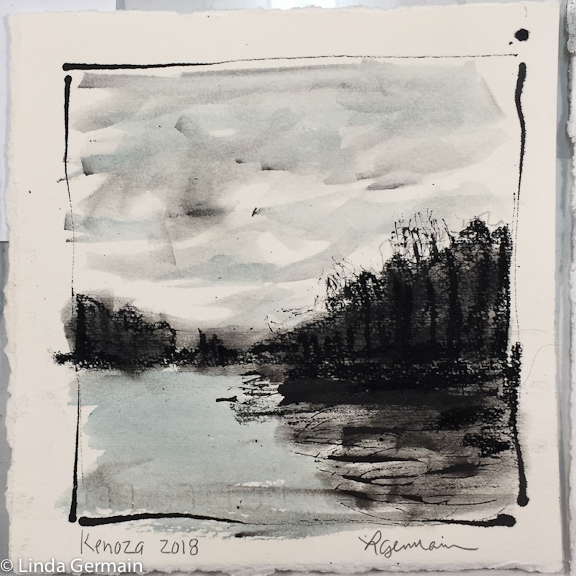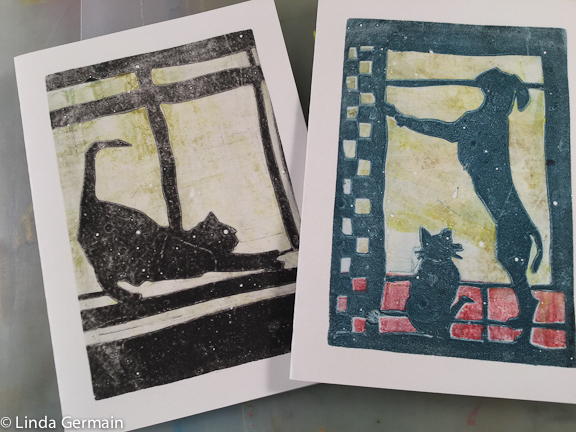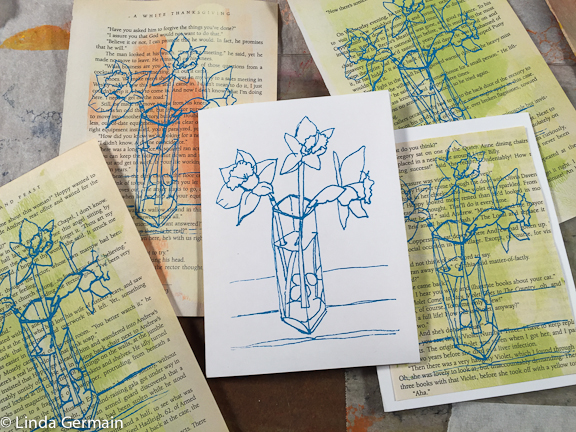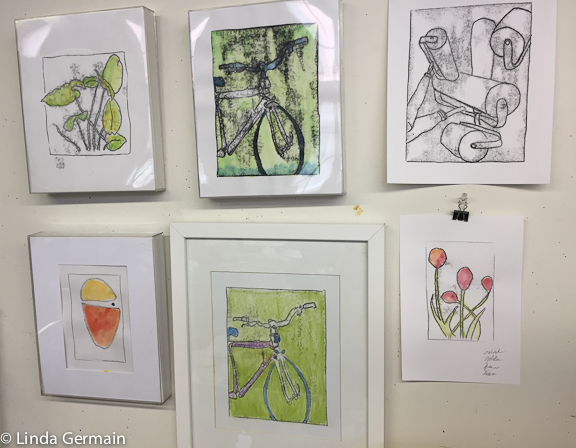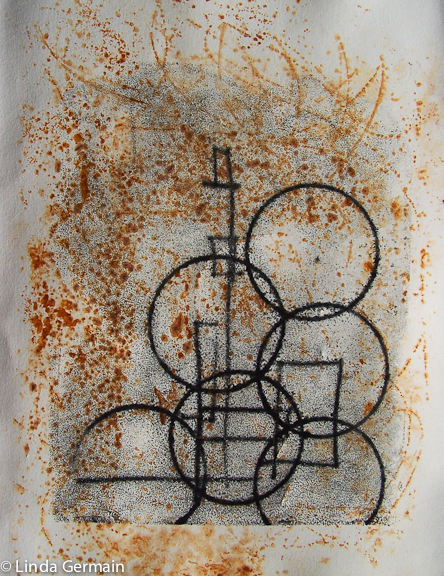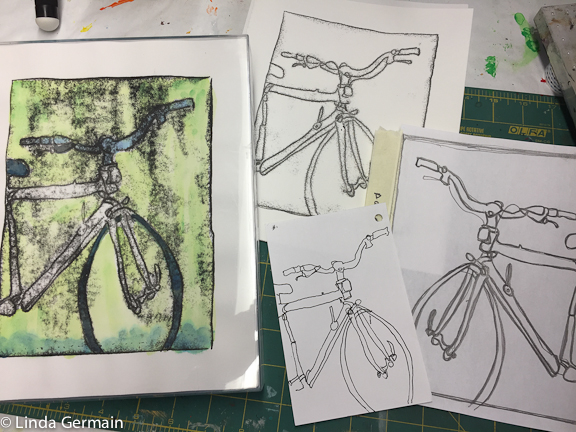Artist book as a canvas for collecting
I recently made an artist’s book with simple brown bag pages.
Brown bags are strong and a great substrate for journals and books.
I added some white pages and some printed pages and a gelatin printed cover.
Then I randomly white washed a few pages, printed on a few and just started adding marks.
I am having fun adding marks here and there and letting the book evolve in a non-linear fashion.
I have been carrying it around with me, so I can add to it where ever I am.
I think it might end up being a memory or record of these few months. I always enjoy looking at these kinds of journals years later.
Give it a try.
Make a book from brown bags or other non-precious papers and then:
- white wash some pages
- tape in random words
- Scribble or doodle
- screen print or stamp in some marks
- add some gelatin prints.
Let it evolve over the next few weeks. If you get some ugly pages, then collage over them. Enjoy!
Artist book as a canvas for collecting Read More »
